

The Daily Design is a mindful way to plan your day in five minutes.
I created this simple template from years of personal experiments and research on productivity and time management.
It includes (what I believe) are the essentials of how to make your days more productive without sacrificing your well-being and mental health.
Its purpose is to help you make significant progress on your most important work while enjoying the process.

A simple template for designing your successful day in 5 minutes.
This article explains how to use this PDF template to manage your time better and make the most of your day.
There are two parts:
They are divided by the black vertical line.
(Pro tip: I like to bend the paper to hide the evening part and make the sheet smaller on my table.)
Start your day planning with the Morning setup, and end it with the Evening reflection to see how your plans matched reality.
These two complete a daily learning cycle that you might typically miss because of not taking the time to reflect.

Take five to ten minutes every morning to decide what’s important and make plans to get it done.
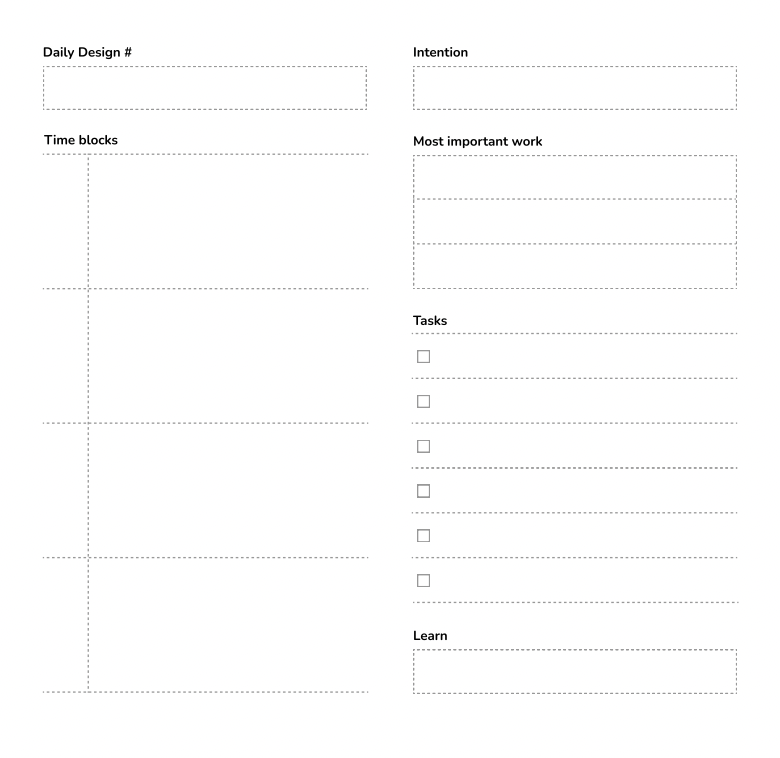
Part 1: Morning setup
State your intention for the day.

Example: My Intention
Your intention is an expression of your intent to act on your needs and values.
You can use it in two ways:
1/ Remind yourself what is the goal behind today’s work – Because goals get easily forgotten on the battleground of everyday responsibilities, it’s useful to keep the WHY of your work in plain sight.
For example, one of my current intentions is: “I will make a living as an independent writer."
2/ Focus your mind on a new practice – Sometimes, there’s an important habit or challenge you want to train. Repeating it as your intention for the day is a good way to keep it on top of your mind.
For example, you could be practicing optimism: “I will think about the upside of anything that happens today."
By writing down your intention, you make a conscious decision to work towards what matters to you.
It’s okay to repeat the same intention for weeks or even months. Actually, that’s how it’s supposed to work. Rewriting your intention every day will keep it on top of your mind. But feel free to experiment and find a system that works for you.
Also, you can have more than one active intention and mix them up on different days, depending on your current focus. But don’t spread yourself too thin. Trying to go in too many directions might prevent you from getting anywhere at all.

Don’t spread yourself in too many directions. Focus.
Choose 1-3 most important projects you want to finish or make significant progress on.
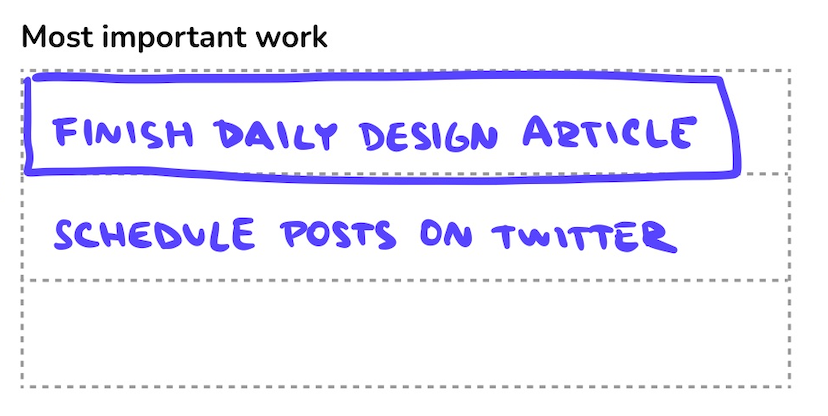
Example: My Most important work
There is limited space in the template for a reason. Every day has limited time and energy to spend on reaching your goals. So you better choose carefully what you work on.
Ask yourself: “If I could only finish one thing today, what would it be?"
Put your answer at the top. The other two spots are for important things you want to work on too, but you won’t until you finish the first one.
For example, my MIW on most days is: “Write the XY article." And I can’t work on anything else until I do my daily 3-4 hour writing session in the morning.
List minor actions you need to do today.
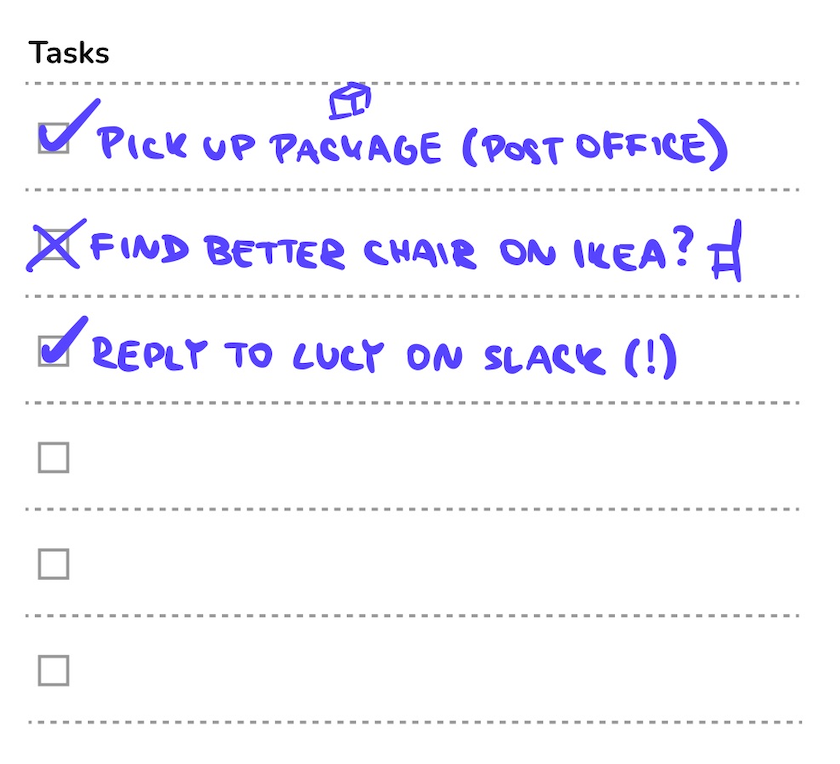
Example: My Tasks
Use this space to plan any task beyond your MIW (Most Important Work). Or deconstruct your MIW into smaller steps you can check off as you make progress.
Reserve time for learning.

This slot is a reminder to create time for purposeful learning: “What do I need to learn about today?"
Put there the question you need to find an answer to or the name of the source you will learn from today.
Manage your time well.
Decide WHEN you will do your most important work. Create enough space for your work, or it will get away from you in the business of the day.
The template is intentionally open here. Those big blocks are there to keep asking you two questions:
1/ When is your prime time for work?
Your prime time is the time of day when you’re the most focused and energized. Reserve this time for your MIW every day.
When is your prime time depends on your chronotype and daily habits.
If you struggle with focus and low energy, the reason might be that your daily schedule isn’t aligned with your chronotype.
Living on a schedule misaligned with your chronotype is like living your life in hard mode.

Find your prime time based on your chronotype and build your day around it.
2/ Did you create enough time to do your MIW?
We are bad at predicting how much time things will take. A good rule of thumb is to allocate 2-3x more time than your first estimate.
I underestimate how much time I need to finish my articles all the time, and I’m the one telling you this. That’s because knowing about this isn’t enough. We need a constant reminder. This section is your reminder.
Set aside more time than you think to do your MIW.
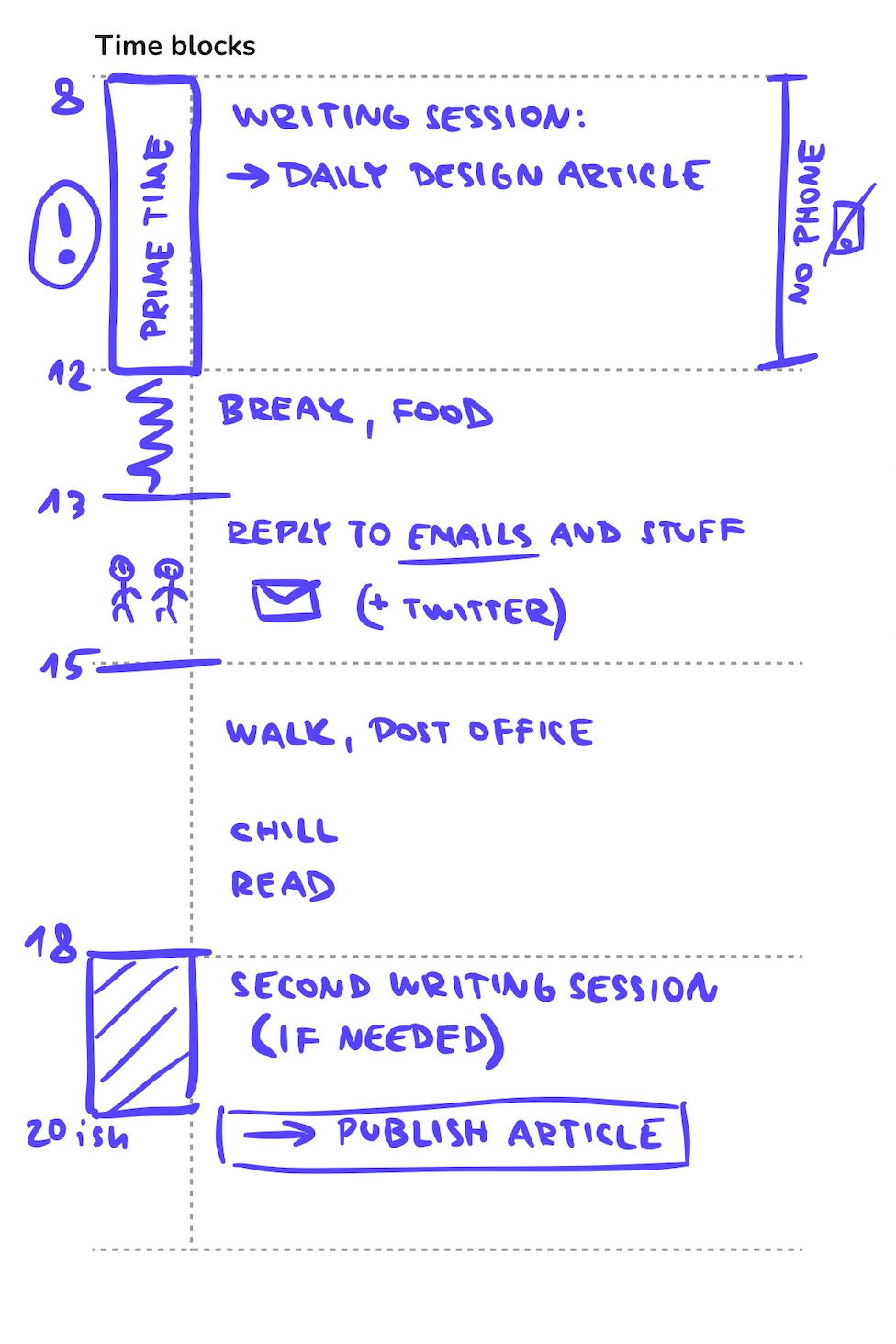
Example: My Time blocks
That’s all for the Morning setup.
Doing this will only take 5-10 minutes, but it might be the difference between wasting your day on things that don’t really matter, or using today’s full potential to meet your goals.
Next, we go to the Evening reflection.
When your work is over for today, take a few minutes to reflect on how you did.
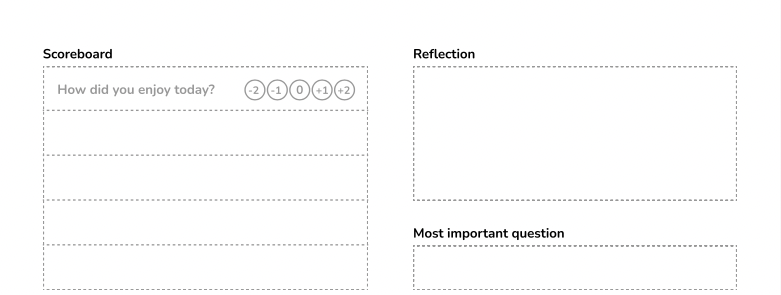
Part 2: Evening reflection
Track important variables.
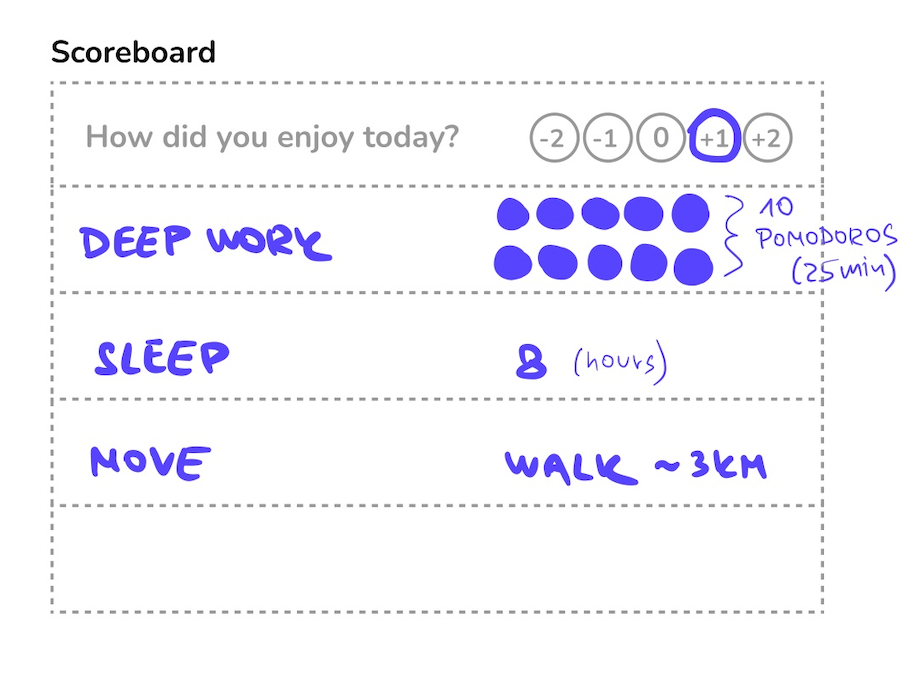
Example: My Scoreboard
I don’t like to focus on numbers in life too much because they can lead our attention away from what’s real. The danger is that we might maximize the number instead of what it represents.
However, tracking a handful of carefully chosen variables can help you be more objective and systematically improve your life.
There is only one preset variable I think everyone should pay attention to.
“How did you enjoy today?"
But this question doesn’t just mean: “How much fun did you have today?" What we’re looking for here is a deeper meaning of enjoyment. I can explain this best by giving you more questions:
I focus on joy here because enjoying the process is crucial for creating a sustainable productivity system for yourself.
If you don’t enjoy your days, you will soon get depressed or burned out, no matter how much work you might be getting done.
Choose what fits your day on the scoring scale:
I highly recommend you track your daily joy.
Use the rest of the space for tracking whatever else you feel is essential to you for having good days.
Write about your day.
This is simply a place for you to reflect in words on WHY your day turned out the way it did. Some of my favorite prompts are:
Give your brain something to think about until tomorrow.
This is a habit I recently adopted. Before I shut my brain off from thinking about work, I ask a question.

Example of my MIQ
The idea is this: If you give your brain an open problem, it will work on it in the background as you go about your business. And it will continue to work on it while you sleep too.

Example of my MIQ
So tomorrow, when you sit down to work, the solution might be waiting there for you.
That’s it.
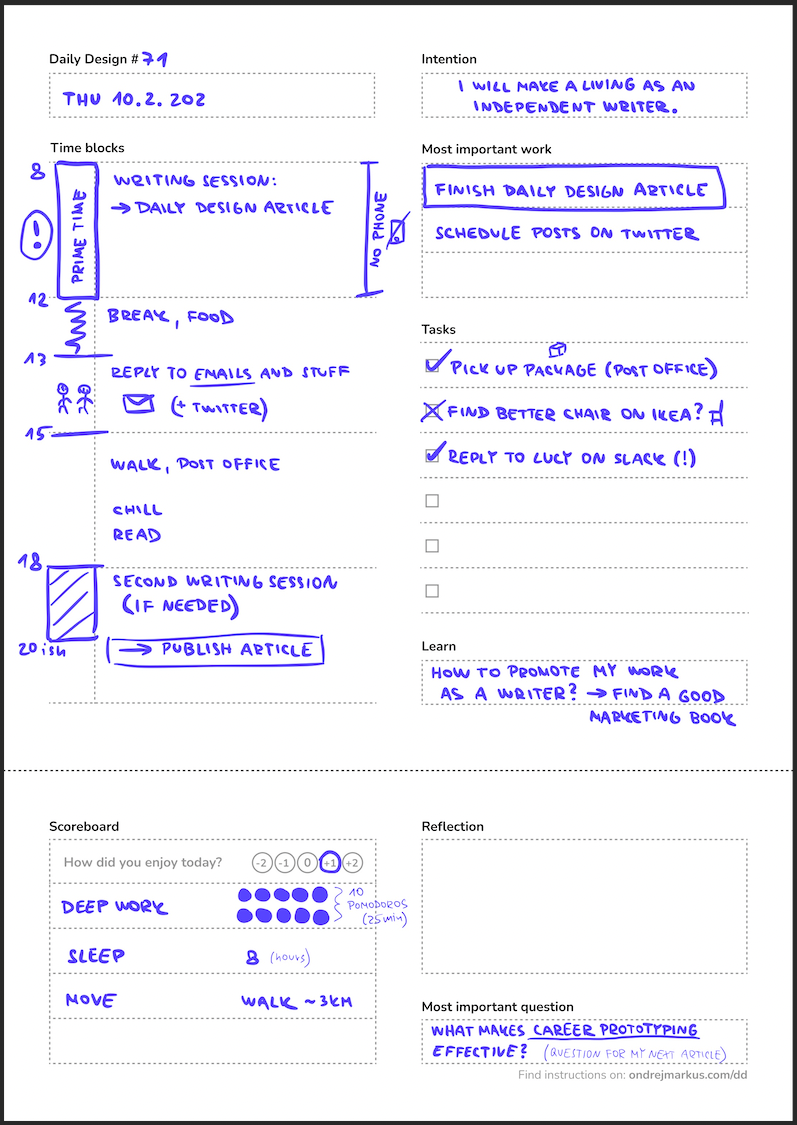
Example: My Daily Design
This is the Daily Design template I use to make the most of my days.
You can download the PDF template for free, print it, and use it to design your successful day.